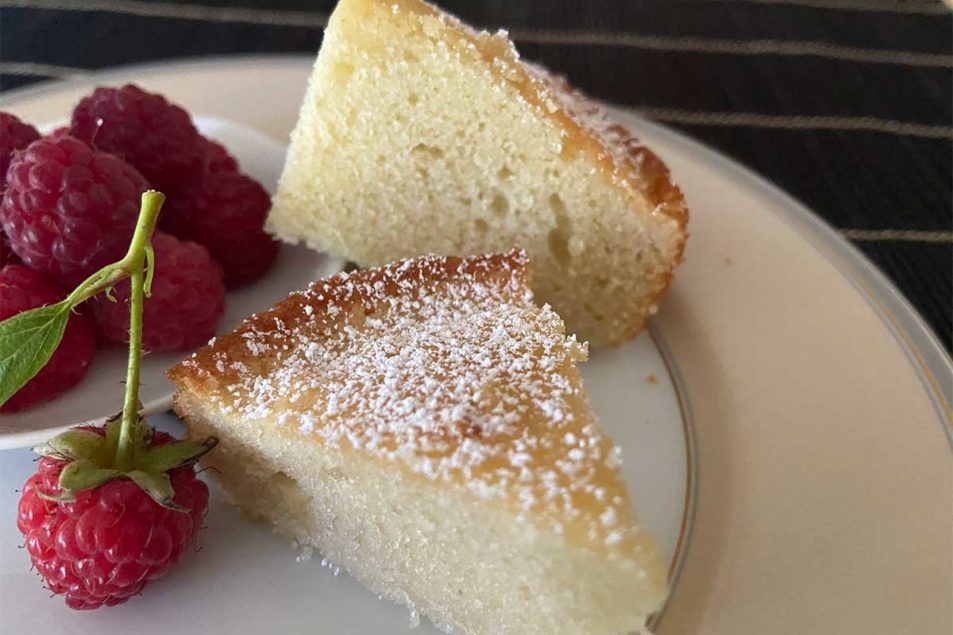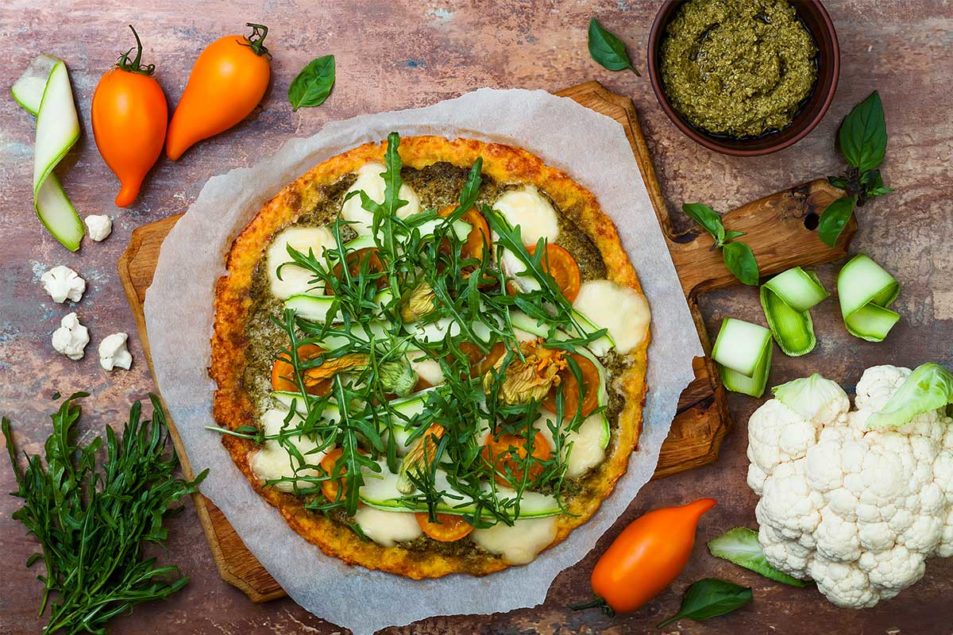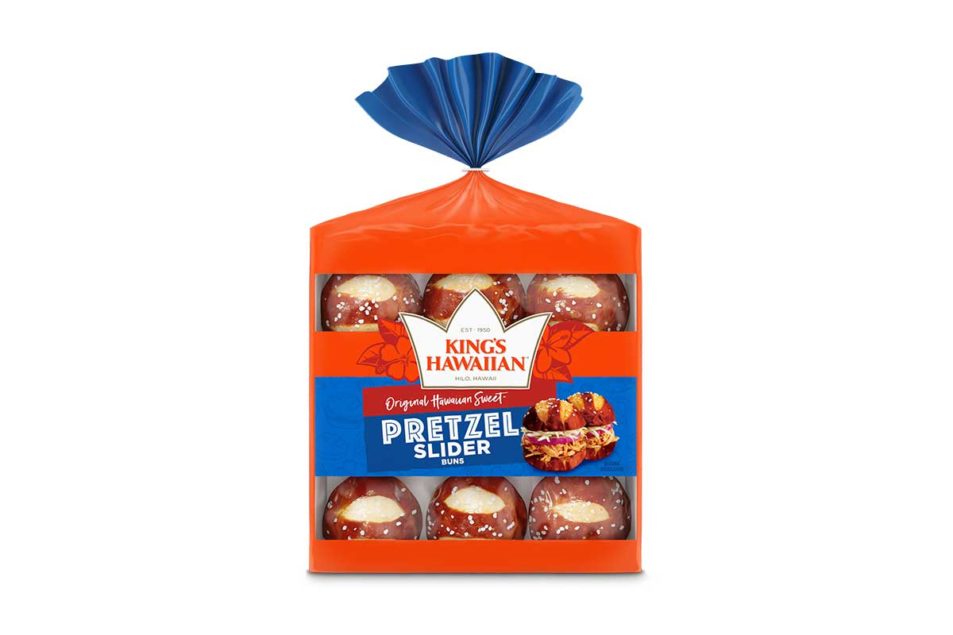CLOSTER, NJ — American Key Food Products (AKFP) expanded its gluten-free cassava flour line.Cassava, a root vegetable that is naturally gluten-free and native to tropical climates in South America and Asia, is milled into bakery-quality flour by AKFP’s partner companies.AKFP introduced its proprietary King Lion Premium Cassava Flour more than a decade ago. Since its introduction, King Lion Premium Cassava Flour has grown to become an ingredient in a wide range of gluten-free baked goods because it is a substitute for wheat-based flours that eliminates the need for complex formulations. To respond to the varied needs of bakers across all segments, AKFP introduced alternative cassava flours with different baking performances and at a range of price points.“King Lion Premium Cassava Flour is regarded by many as the standard for gluten-free flours,” said Edwin Pacia, chief operating officer, AKFP. “We realize that several of our customers have unique baking and cassava flour needs to meet different product, texture and even cost requirements. We continuously work with our cassava flour production partners to develop flours that have unique value propositions and different baking properties. With these new offerings, we can better match a cassava flour to an individual baker’s formulation needs. As our customers continue to innovate and define the future of the gluten-free market, we strive to support them with equally innovative ingredient solutions.”AKFP has gluten-free flour solutions for a variety of products, including tortillas, pizza crusts, crackers, breadsticks, cakes, cookies and brownies. .
Gluten-free a growing opportunity for specialty bakers
While no longer at early pandemic levels, bread sales remain strong, thanks in part to increased consumer demand for specialty offerings. Center-store dollar sales of specialty bread rose 2% to $27.6 million, according to IRI for the 52 weeks ending April 17, 2022. Sales of panini, ciabatta and focaccia bread jumped 23.1% to $24.7 million. Shoppers are prioritizing indulgence when it comes to their baked foods, and inflation has driven many to opt for their favorite premium brands instead of eating out. At the same time, increasingly health-conscious buyers have driven sales of better-for-you (BFY) breads, including gluten-free offerings, and bakeries that specialize in these products are taking advantage. Canyon Bakehouse, Johnstown, Colo., for example, recently launched a gluten-free brioche dinner roll in addition to its line of whole grain, gluten-free products. And tortilla makers like Mission Foods, Irving, Texas, and Siete Family Foods, Austin, Texas, offer gluten-free tortillas made from almond, cauliflower, chickpea and cassava flour. It’s clear that products that marry consumer demand for premium and gluten-free baked goods can find success. But reformulating these offerings can be challenging for bakers, requiring them to do their homework on their desired product qualities and the best combination of gluten-free solutions to get the job done.Replacing the irreplaceable Baked foods rely on gluten to provide the expected texture, volume and more in consumers’ favorite baked foods. And that’s no different with specialty breads. “When it comes to gluten, I think we’ve got to be fair that you’re replacing an incredible ingredient,” said Steven Gumeny, regional product manager at Beneo. “Consumers expect certain textures from different types of bread, and really those classic textures are rooted in the tradition of working with wheat flour. The elasticity and structure provided by gluten, it’s naturally unique, and it’s very hard to replace in the bakery.”This elasticity allows bakers to easily form dough into what will become a premium roll, loaf or flatbread. Gluten also provides volume during baking, an essential function often lost when gluten is removed. “The most challenging thing for gluten-free bread is we often get the big holes inside a loaf,” explained Yanling Yin, PhD, director, bakery application, Corbion. “It’s because it doesn’t have gluten that provides visco-elasticity and can retain air bubbles without collapsing when the loaf is done expanding in the oven during baking.”Removing gluten can be especially difficult in premium products, Mr. Gumeny noted, because there’s more variance in the bubble formation and crumb structure, which significantly impacts texture. Understanding this expected texture is critical for bakers.“In a specialty product, the challenge is first to think about what that desired texture will be,” he said. “Is your tortilla going to be flexible or is it going to be crisp? Does your flatbread need crunch or chewiness, or both? And what’s your desired crust structure; are you going for a more rustic, bread-like crumb, or do you want the finer, cake-like features?”Once bakers decide on texture, they can then understand what may happen to it if gluten is removed. “For example, gluten-free flatbread is prone to tearing because of limited strength or elasticity, and it may have a powdery mouthfeel compared to traditional flatbreads,” explained Hanna Santoro, senior bakery scientist at ADM. “Freeze-thaw instability can affect textures of gluten-free pizza crusts or focaccia breads. Additionally, ancient grains might present a bitter aftertaste or aromatic off notes.”Replacing gluten is a difficult task in any premium product, but it may be easier in applications like tortillas that are less reliant on gluten for structure, noted McKenna Mills, senior technical services specialist for bakery, Cargill. “Formulating a gluten-free tortilla may be a little easier — you won’t need gluten’s strength to hold the product up. Still, you’ll face texture and mouthfeel challenges,” she said. “Gluten provides a chewiness and resiliency that is hard to replicate with other ingredients. Remove the gluten, and you’ll encounter negative attributes like gumminess, which can be difficult to eliminate.”Gluten also provides the moisture that is essential for achieving the proper texture of tortillas and flatbreads. “[Gluten-free] is a challenge in the flatter breads — the tortillas and flatbreads — because you don’t want these products to dry out, and if they do, they just become crackers,” Mr. Gumeny said. “So keeping that moisture without having all that great dough structure inside to trap the moisture, that becomes important.”Starch support In gluten-free formulations, starch is a go-to for bakers to hold onto that moisture, as well as maintain other key functionalities.“For structure, we typically rely on starches, which can serve as the backbone of the dough,” Ms. Mills said. Rice starches, for example, can mimic the structural and moisture-retaining capabilities of gluten in many applications. This includes waxy rice starch, which is made almost entirely of amylopectin, a compound that provides a unique branching structure that helps prevent gluten-free products from degrading.“This starch swells as soon as it’s mixed with the wet ingredients, which really improves your dough handling up front, and it’s also trapping in the moisture and keeping it where it belongs: in the bread during the baking process and also throughout the shelf life,” Mr. Gumeny explained. “That waxy instant starch is a great one for gluten-free products, pretty much all of them, and that same starch can be used to reduce breakage even in hard-baked goods like crackers and shortbreads as well.” Another key ingredient is starch or flour made from indica rice. This rice is high in the compound amylose, which aids in the crumb structure and formation of bubbles in the bread during baking. Bakers that use these waxy and indica rice solutions in conjunction can get the moisture retention and dough workability needed in baked foods. Beneo’s Remyline includes a finely ground, instant starch made from waxy rice. The company also offers a coarse, native indica rice starch and wet-milled micronized rice, both of which can be used together with instant waxy starch. The use of rice ingredients can also help specialty products achieve a clean label, which is increasingly popular with consumers. Cargill released its SimPure soluble rice flour earlier this year as a label-friendly alternative to maltodextrin, a processed ingredient derived from starch used to provide bulk, viscosity and taste to baked foods. “With our soluble rice flour solution, product developers finally have an alternative that behaves very similarly to maltodextrin in terms of functional attributes, and at the same time, it aligns with today’s consumer trend toward familiar ingredients,” Ms. Mills explained. Other starches and flour sources can serve as the backbone of specialty gluten-free formulations as well, including potato, tapioca, almond and cauliflower. Cargill’s SimPure potato and tapioca starches can fill the functional role of gluten while also satisfying consumers’ label expectations.Sorghum and oat flours are also commonly used due to their more neutral flavor profile compared to other alternative grains available, explained Vanessa Brovelli, research and development director at Bay State Milling. “In addition, their whole-grain nutritional contributions can boost fiber and protein, which is typically lacking in gluten-free baked goods made with mostly starches or white rice,” she added.Bay State Milling’s SowNaked Oats contain 40% more protein and half the carbon footprint of traditional oats, making them an ideal gluten-free option for specialty bakers looking to add additional nutritional and environmental benefits to their products.Regardless of the options bakers go for, Mr. Gumeny noted it’s important they nail down the right combination and quantity of each ingredient for their specific premium application, as well how the solution will interact with the other ingredients in the formulation.For example, cauliflower flour, a popular gluten-free substitute in pizza crusts and tortillas, often has a higher moisture content than conventional flour.“What that means is you either need to adjust how much moisture you add to your dough and be aware that these ingredients like starches, which are going to be trapping that moisture, are going to interact with that additional water activity as well,” Mr. Gumeny said. “So keeping in mind when adding a cauliflower, for example, that it’s not going to be a one-to-one with bread flour in terms of moisture.”Tortillas and flatbreads also typically have a much higher fat content than traditional breads, and this ingredient will affect how quickly starch absorbs moisture. “You need to be aware of that and possibly adjust your starch level up or down depending on the overall water activity of your product, based on the amount of shortening that you’re using,” he added.To eliminate some of the formulating complexity, Corbion offers gluten-free bread and tortilla bases. “Bases mean customers just add water and some yeast. Bakeries don’t have to batch in all those minor functional ingredients,” Dr. Yin explained. “The bases improve bakery production efficiency by reducing batching errors. It’s one of the popular solutions for bakeries.” Maintaining shelf life is another vital component when choosing the right ingredients. For example, gluten-free baked foods headed for the freezer aisle may benefit from more waxy starch that’s designed to resist retrogradation. “If you make sure there’s waxy rice in a frozen baked good, you’re actually going to get some good freeze-thaw stability on that, which means less ice crystals and ultimately a better product for longer,” Mr. Gumeny said. Makers of gluten-free flatbreads or pizza crusts also need to consider how the process affects gluten-free ingredients. “If you’re trying to sheet out thin pizza crust compared to rising a loaf of bread, some things are different,” he noted. “You’re still going to want good dough spring, you’re still going to want good structure, but you’ve got to be aware of again how your process interacts with the ingredients, namely in our case the starch, because anytime you have other ingredients that are competing for moisture, or you have a process that could potentially be damaging some starch, you could see differences.”Gums, emulsifiers and more While starches are a go-to for structure and moisture retention in gluten-free applications, bakers often include other ingredients to further replicate gluten’s functionality. This includes gums, which are often used as gelling agents to impart the proper texture of specialty breads. “Some starches can help with gel strength, but we’ll often turn to hydrocolloids like xanthan gum, guar gum and/or locust bean gum to deliver the full functionality needed,” Ms. Mills said. “These ingredients help provide proper batter viscosity, air entrapment, crumb elasticity and stability.”Setting agents can also assist with shelf life by extending crumb softening and preventing starch retrogradation, she added. Bean and pulse powders, including fava, pea, chickpea, navy beans and red lentils, can fill this role in gluten-free products while providing an additional source of protein, Ms. Santoro noted. Emulsifiers will often be added as well to help maintain softness. “Release agents like our soy, sunflower or canola lecithins are key for machinability,” Ms. Mills said. “Without any flour to hold onto the water, most gluten-free doughs are extremely sticky. Release agents improve the processability of gluten-free doughs.”Another common issue with gluten-free products is a dry texture, which can be solved with humectants that improve moisture retention over the product’s shelf life, as well as freeze-thaw stability, Ms. Santoro added.“Sweetening solutions are another solve,” she said. “Products like our reduced sugar glucose syrup aid in moisture retention while reducing total sugars in the formulation. Additionally, allulose syrup reduces sugars as well as total carbohydrates to help gluten-free bakery achieve lower carb claims.”Bakers can also extend the shelf life of gluten-free premium products through enzymes. Corbion offers its Ultrafresh line of enzymes for breads, buns, bagels, tortillas and flatbreads, as well as natural mold inhibitors. Growing consumer demand for BFY and premium offerings present an opportunity for bakers looking to make gluten-free specialty breads, but formulating these products remains a steep order. There’s no single drop-in option to replace the functionality of gluten, and bakers should work closely with suppliers to find the right ingredients for their desired product. .
Healthy premium breads driving growth
Bread sales are getting back to levels seen before they spiked during the coronavirus (COVID-19) pandemic, but figuring out what will come next could be tricky. Will inflation drive sales down and push consumers to choose cheaper options, or will budget-conscious consumers actually stick with their favorite premium brands instead of eating out?“Year to date, if you look at sandwich breads, unit sales are just about flat, so it’s not terribly far off from pre-pandemic levels. Supply chain is likely driving that decline,” said Melissa Altobelli, principal, strategic solutions group, IRI. “I think it will be interesting to see what happens as inflation continues because people are facing higher prices in a lot of areas: rising gas prices, transportation, apparel — everything is going up — so there’s going to have to be tradeoffs on how consumers spend their money.”Healthy premium choices, such as keto, low-carb and gluten-free breads, are driving growth in the category, she said, although mainstream sandwich breads still make up the bulk of sales.“Many households are buying both the healthful bread with mom on the keto diet or with sensitivity to gluten, but she’s still buying regular, mainstream bread for the kids,” Ms. Altobelli said. “There could be some trade down because now they have a shrinking wallet. Folks who bought both the premium bread for themselves and regular — whether it’s white or wheat or rye for the kids — perhaps they’re going to just eat what the kids do. There’s a lot of dynamics that we need to watch to see what’s going to happen.”But Americans are still buying plenty of bread. Center-store bread and roll sales were up 2.3% to $16.3 billion for the 52 weeks ending April 17, 2022, with unit sales down 4.5%, according to IRI. Perimeter bread and roll sales for that same period were up 8.3% to $3.3 billion, and unit sales were up 8.8%, IRI reported. Innovation may have slowed a bit over the past couple of years, but bakers are finding plenty of new ways to engage with consumers, whether it’s extending popular premium brands or experimenting with alternate flours.Although consumers may not be making the best food choices at every meal, they are often choosing something better, according to the recent “What’s in Store” trends analysis from the International Dairy, Deli, Bakery Association (IDDBA).“Healthier eating has been an area of on and off focus for many Americans,” the report stated. “The pandemic prompted a greater focus on health, with a particular emphasis on immunity but also on emotional well-being. In fact, 95% of Americans believe physical health and emotional well-being are interconnected, according to 210 Analytics.”The report goes on to say that consumers are seeking to minimize what they see as the bad, such as artificial flavors and salt, while pursuing attributes they see as positive, such as protein, fiber and antioxidants.Innovating in the areas of health, wellness and premium breads is the best way for bakers to engage with consumers, Ms. Altobelli said.“Innovation and healthier options such as low-cal, low-carb, good source of fiber, non-GMO, keto, gluten-free, protein — there’s all sorts of claims out there,” she said. “And on the premium front, it’s artisan, rich flavors, thick bread.”Ms. Altobelli cited Sara Lee, owned by Horsham, Pa.-based Bimbo Bakeries USA, as one brand finding a lot of success.“Sara Lee is growing on a lot of fronts,” she said. “Their regular center-store sandwich bread, their Sara Lee Artisano bread, and they have a new Delightful, which is a low-calorie offering — those are growing across the board. And there’s a new keto bread, Lewis Healthy Life. Keto bread, though small, is also driving growth.”King’s Hawaiian, Torrance, Calif., recently launched Original Hawaiian Sweet Pretzel Hamburger Buns and Slider Buns to give consumers a premium pretzel bread with a new twist.“These King’s Hawaiian Pretzel bread offerings have all the irresistible characteristics of our original Hawaiian sweet bread — soft, sweet and fluffy — combined with a salty pretzel exterior that makes for an incredible sweet and salty combination,” said Chad Donvito, president of King’s Hawaiian.He added that research and development is focused on high-quality products that bring fun to both meals and snacking, which the company sees as delivering the most success for King’s Hawaiian.Flowers Foods, Thomasville, Ga., has brands that fit into several of the healthy and premium categories, including Dave’s Killer Bread, Nature’s Own Perfectly Crafted and gluten-free brand Canyon Bakehouse, which recently launched a brioche dinner roll.“Our brand legacy is built around inclusion and giving people back the sense of normalcy when it comes to eating bread. Something as simple as a dinner roll can have a tremendous impact when it lives up to the expectations of great taste, wholesomeness and high-quality ingredients,” said Mark Courtney, chief brand officer for Flowers Foods. “A dinner roll seemed to be a perfect fit, given the success of other Canyon Bakehouse product extensions, including buns, bagels and English muffins.”Nature’s Own recently launched two new breads, Hawaiian and Perfectly Crafted Sourdough, both of which were inspired by consumer preferences.“The Nature’s Own brand team gathers consumer insights about the flavors, sizes and other attributes consumers would like to see,” Mr. Courtney said. “Both Hawaiian and Sourdough scored on par with some of our best sellers in each line, so we felt confident consumers wanted these items.”This article is an excerpt from the July 2022 issue of Baking & Snack. To read the entire feature on Bread, click here.
.






